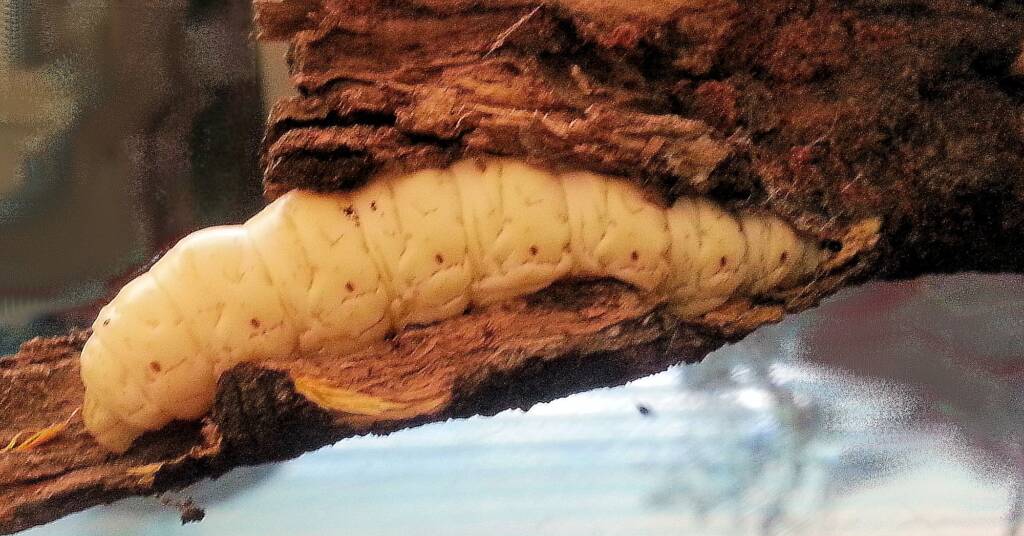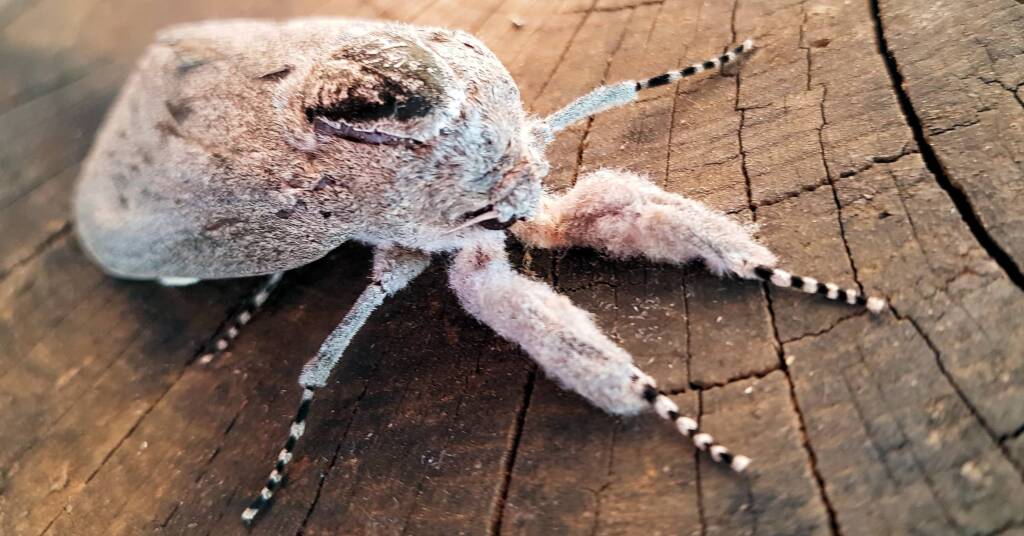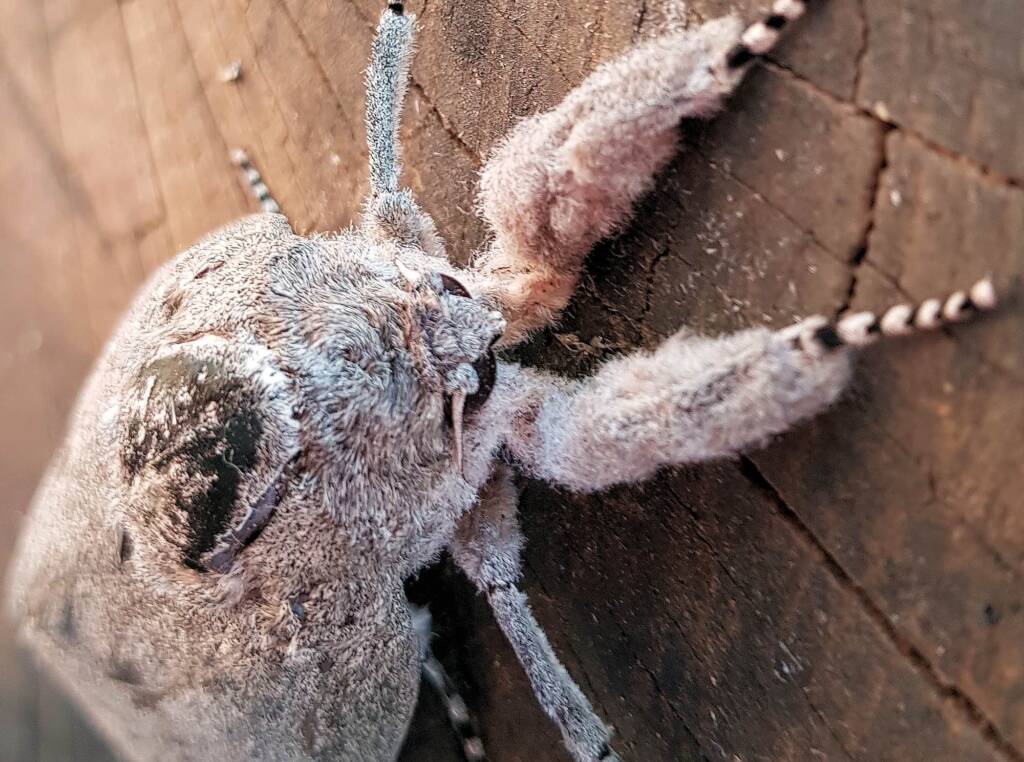The witchetty grub (also spelt as Witjuti) is the larvae of the cossid moth (Endoxyla leucomochla). The larvae of this large grey moth can grow to 6 cm and longer. The large grub is found mainly in the woody roots of the witchetty bush (Acacia kempeana) where it makes its home. The witchetty bush is an important plant for the Indigenous People of Australia. During a really good season, you can collect up to as many as 50 grubs from the roots of one decent sized bush.
Aboriginal women and children will dig around the roots of the witchetty bush. The roots of the bush are usually shallow growing. When they strike the root, they would follow the root along for a short distance and if there is a swelling in the root, with no evidence of an exit hole, they would dig the root out of the ground and break it open at the swelling. If the grub is injured while breaking open the root, they would usually be eaten immediately. The majority of the grubs would be taken back to camp to be roasted lightly in coals before being eaten.
The grubs are rich in proteins and fats that are easily assimilated by humans, and as a food source is highly valued by the Aborigines. Only the hard head parts are not eaten. When eaten raw, they are said to have an almond like taste. When lightly roasted depending on your taste buds, they can have a flavour like an egg yolk or that of chicken to prawn taste. Although the grubs can be found at all times of the year, not all Witchetty bushes will harbour the grub. The moths themselves are also eaten.1
As well as food for bush tucker, they were also used in traditional bush medicine. The witchetty grubs were crushed into a paste, placed on burns and covered with a bandage to seal and soothe the skin by the indigenous people of Central Australia.
Common name
the listed language groups know the witchetty grub by the following:
- Adnyamathanha — witjuri
- Alyawarr — atnyemayt
- Anmatyerr — atnyematy
- Eastern Arrernte — atnyematye
- Luritja — maku
- Pinupi — lunki, maku, pilanpa
- Pitjantjatjara — lunki, maku ilykuwarra
- Warlpiri — ngarlkirdi
The Family Cossidae (cossid millers, goat moths, cossid moths) is a global family of mainly large moths with around 700 named species. There are about 60 species of the Genus Endoxyla in Australia, not all of them are large, some of which feed on eucalypts or wattles. Many cossid larvae were eaten by Aborigines.
In eastern Australia the name ‘Witchetty’ is often used by other people for any fat, white, wood-boring grub, including those of other wood moths (Cossidae), swift moths (Hepialidae) and even longicorn beetles (Cerambycidae).2
The adult Witchetty Moth (Endoxyla leucomochla), lacks functional feeding organs. It lives for only a few days on fat reserves, breeding and then dying.
In Central Australia the true ‘witchetty grub’ (E. leucomochla), whose caterpillars live underground feeding on the roots of the shrubby ‘witchetty bush’ (Acacia kempeana) are found depicted in the artwork of many aboriginal artists.
The grubs are still widely harvested by Aborigines in Central Australia, with the traditional sharpened wooden stakes digging sticks often being replaced by pointed steel bars.

Check out the information in our Aboriginal Symbols – Witchetty grub.
- Scientific classification
- Kingdom: Animalia
- Phylum: Arthropoda
- Subphylum: Hexapoda
- Class: Insecta
- Informal: Pterygotes
- Order: Lepidoptera
- Unranked: Ditrysia
- Superfamily: Cossoidea
- Family: Cossidae
- Subfamily: Zeuzerrinae
- Genus: Endoxyla
- Species: Endoxyla leucomochla
Footnote
- Peter Latz, Bushfires and Bushtucker Aboriginal Plant Use in Central Australia, IAD Press, Alice Springs, 2004, p103-104
- Australian Museum – Witchetty Grubs
- Feature image (top) Witchetty grubs © Hans Boessem












